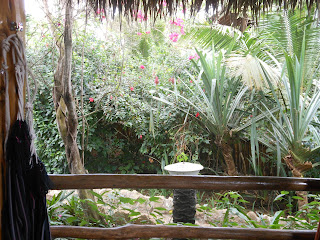In Cuenca, the king of the road is the city bus. Motorists give way to any bus, while
pedestrians scurry when a bus approaches since busses seem to slow down for no
one. I can believe the rumors I’ve
heard that a couple of people have been killed by busses in the last few
months.
These mammoths of the roadways spew disgusting black exhaust as they roar down the city streets. I
try not to breathe as they pass by.
There are plans to replace them with energy efficient vehicles, but I
doubt I’ll see this happen in my remaining months here.
 |
| Narrow downtown streets weren't designed for these monsters |
Despite its drawbacks, bus transportation is cheap and
reliable. Most days I take
advantage of the 25-cent fare that will get me downtown in 10 minutes. And busses are plentiful--I rarely
wait more than 5 minutes for my bus, except after 8 p.m.
 |
| My local bus stop |
The city bus provides a great opportunity for people
watching, both inside the bus and out.
I’m a bit shy about taking photos of people on the street, but I find
that it’s easy to inconspicuously snap photos of people waiting at a bus stop
from the bus window.
 |
| View from the bus window |
An additional benefit to city bus travel—at times a couple
of musicians will board the bus and serenade the passengers with a song or two
before they pass the hat. I always contribute, in honor of musicians world wide (including my son!)
 |
| Great Andean music! |
At the major intersections in town, we’re often treated to a
street performance by jugglers or baton twirlers. They have to work fast; after a minute of performing, they
run up and down the line of stationary cars, collecting contributions. I always wonder how much money they
make in a day’s work.
 |
| A street performer doing her act -- quick before the light changes! |
The times I spring for the $2.00 cab fare, I realize how
much faster a taxi can get me places and I wonder why I take the trouble of
riding the bus in order to save $1.75.
But I do feel that my daily rides give me a view into city life I would
never see from the comfort of a taxi.





